Finding flowers in your food isn’t as surprising as it used to be. Marigolds and pansies are a pretty common sight in salads, and candied rose petals and violets decorate all kinds of desserts.
But I have yet to order a dish at a restaurant and find fuchsia flowers – or berries, for that matter.
Despite their delicious flavor, it seems that most people still think of fuchsias as a pretty decoration in the garden, not the source of a snack.
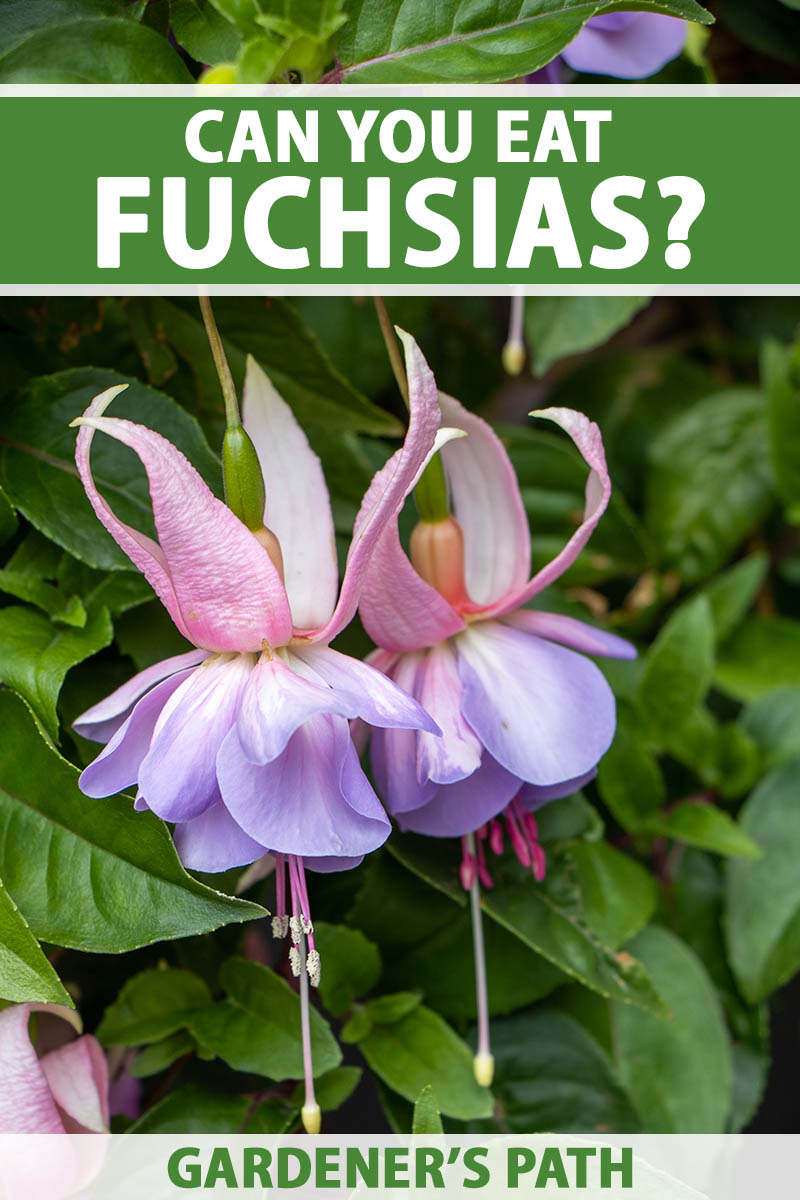
We link to vendors to help you find relevant products. If you buy from one of our links, we may earn a commission.
Let’s change that. Like roses, fuchsia plants might produce stunning floral displays, but they can serve double duty. Not only can you eat the flowers, but the berries and leaves are edible as well.
Curious about how to eat fuchsia flowers, leaves, and berries? Or are you wondering which plants taste the best? Here’s what we’ll talk about coming up:
What You’ll Learn
Set the table, because we’re about to dig in.
Are Fuchsias Edible?
Many people don’t realize that the little pod that is left behind after a fuchsia flower blooms is actually an edible berry, and these plants have been cultivated for their fruits for centuries in their native lands.

People from many cultures appreciate their berries, such as the Maori in New Zealand, and native people including the Incas who made their home high in the Andes where certain fuchsia species thrive.
You can even buy baskets of the fruits at markets in several South American countries such as Bolivia, Ecuador, and Peru.
In most of the US and Europe, however, these plants have mainly been cultivated to create interesting foliage and beautiful (not tasty) flowers. I think that’s a shame, since some species are absolutely delicious.
Even for the ones that don’t taste as incredible, it seems like such a waste to toss out perfectly edible fruits and flowers.
To be clear, all parts of the plant are safe to eat, including the leaves, but the fruits and flowers are the standouts.
So let’s get a bit technical for a second.
Fuchsias produce an epigynous inferior ovary (or a false fruit) that contains the seeds of the plant. The ovary is attached to the end of the flower, and apples and roses have the same sort of structure.
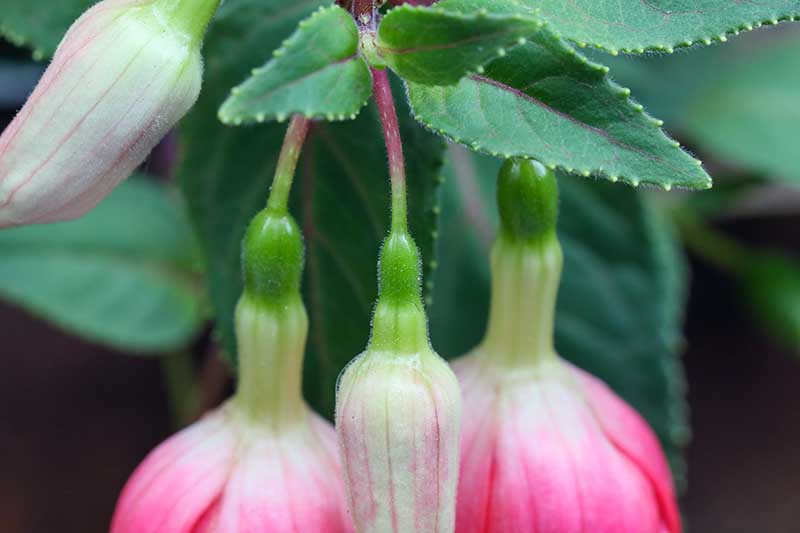
What do all these terms mean? Surely fuchsia flowers aren’t inferior?!
In this case, inferior just means that the seeds are contained below (rather than above) the other parts of the reproductive plant material, inside a cup-like structure.
That ovary is what ripens and turns into a berry with seeds inside.
Below the ovary is the top of the flower, known as the tube, followed by the outer parts of the calyx, which are called sepals. Inside the sepals are petals, along with the styles, and the filaments, which hang from the ovary.
Are we all on the same page?
Some plants have exceptionally sweet, juicy berries, while others are decidedly more bitter or firm, even when mature.
Fruits can range from under a half inch to over an inch long. The berries are either round or elliptical.
The flavor is usually sweet and slightly acidic, with a bit of pepper or lemon flavor, or sometimes both.
Then there are those beautiful flowers, which are also entirely edible, though the petals are the tastiest part. The flowers can range from petite, with few or small petals, to large and full, with lots of petals or exceptionally large ones.
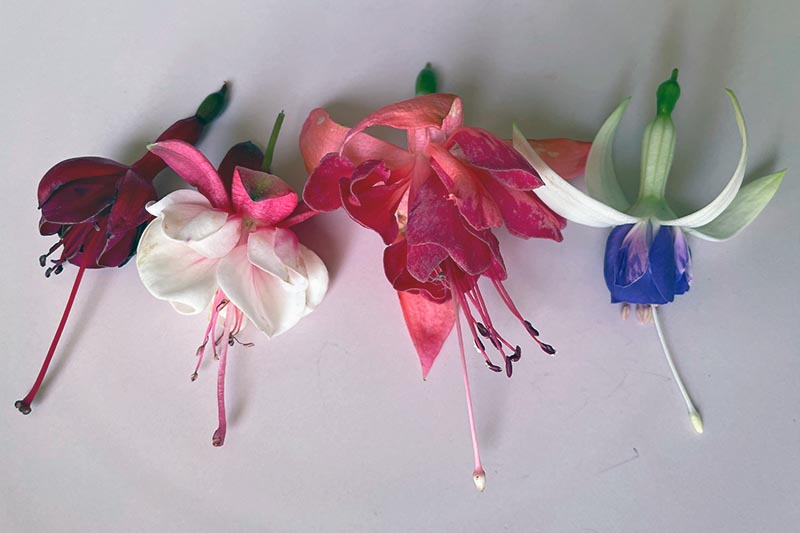
For those who are fans of slightly bitter and subtly acidic flavors, fuchsia flowers are quite tasty. Other people use them mainly as an edible garnish or a colorful addition to a salad.
When to Harvest
You can start harvesting the flowers any time they are present on the plant. Because these plants are capable of blooming from spring until fall, that can mean just about any time during the growing season.
Once your plant starts blooming, ripe berries are usually only a week or two away. In my area, I can start harvesting as early as May.
Most plants continue to produce flowers all summer long and into the fall, followed by fruit if you don’t deadhead.
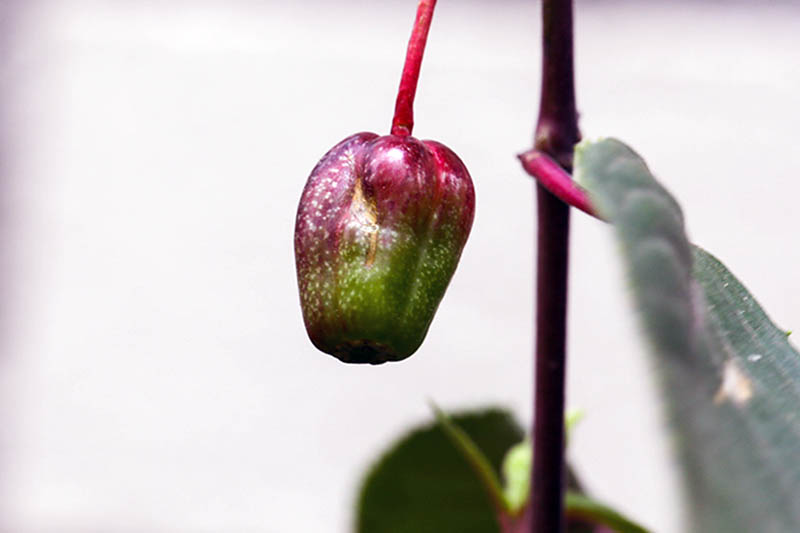
Not all species flower all season, however, so take note of your particular plant’s blooming habits.
It’s also worth noting that if you let the flowers turn into berries, the plant may eventually stop producing flowers.
I find that by only allowing about half of the fruits to ripen, I can keep my plant producing all season long. For the other half, deadhead the flowers.
That means you can have both berries and flowers present on the same plant at the same time throughout the growing season.
However, there are species and hybrids that will keep on flowering even if the berries form. If you plan to grow fuchsias for the berries, look for these. I’ll provide some suggestions below, so keep reading!
Flowers can be eaten any time they are present, but the more mature they are, the more sweetness they will have. I like to give them a gentle tug and if they fall away easily, they’re ready to eat.
While they are far less in demand than their floral and fruity counterparts, the leaves are also edible. You can pluck these any time, but they are best when they’re young.
How to Harvest
To harvest the flowers, simply snip them off with a pair of scissors or trimmers. You can also pinch them off using your fingernails.
To encourage the fruits to ripen, don’t prune away the spent flowers. Instead, let the flowers fall off naturally. You can also give them a very gentle tug.
They’ll come away easily if they’re about ready to drop, and then you can eat them. The berry will remain behind, and will begin to mature.
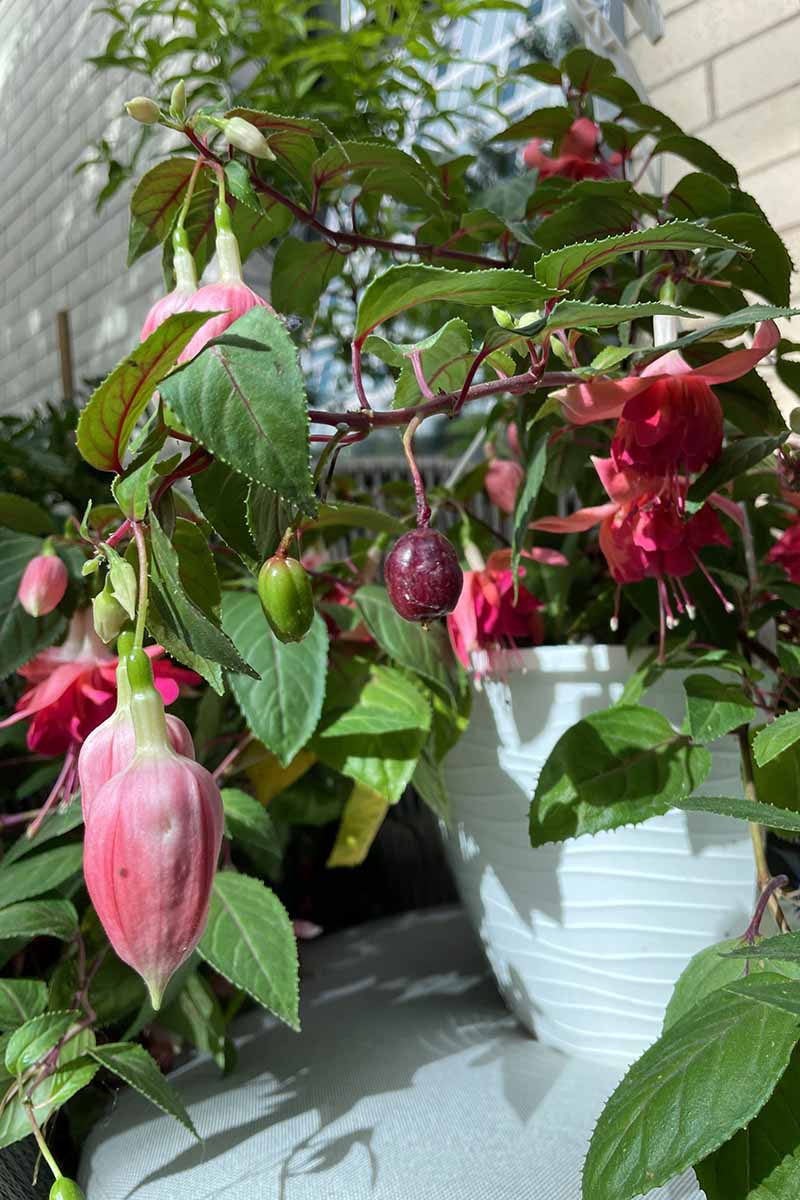
To determine if a berry is ready, give it a gentle squeeze. It should feel soft but not mushy. The berries also change color as they mature, though the color varies from one variety to the next.
Some berries are deep red, purple, or even black when mature. Some are dark green. The fruits won’t continue to ripen off the plant, so don’t harvest them too early.
Snip each berry off with a clean pair of snippers, scissors, or your fingernails.
Snip or pinch off the leaves when they are young.
Best Species and Hybrids for Eating
As a general rule for these plants, the larger and more frilly the blossoms are, the less flavorful the berries will be.
The darker a berry is, the sweeter it usually is. The large, showy flowers tend to taste less bitter, particularly the inner petals.
There is a hybrid called ‘Fuchsiaberry’ bred by Thompson & Morgan that produces big, juicy berries that taste somewhat like a cross between a kiwi and a fig.
Even better, the plant won’t stop producing flowers if you let the berries form and mature.
‘Jingle Bells’ is one of the hardiest fuchsias out there and it also happens to have large, dark, sweet berries.
F. regia subsp. regia is a little difficult to find, but it’s worth seeking out for its massive berries.
‘Cecile,’ ‘Swingtime,’ and ‘Fascination’ have particularly tasty flowers that aren’t too bitter or too acidic.
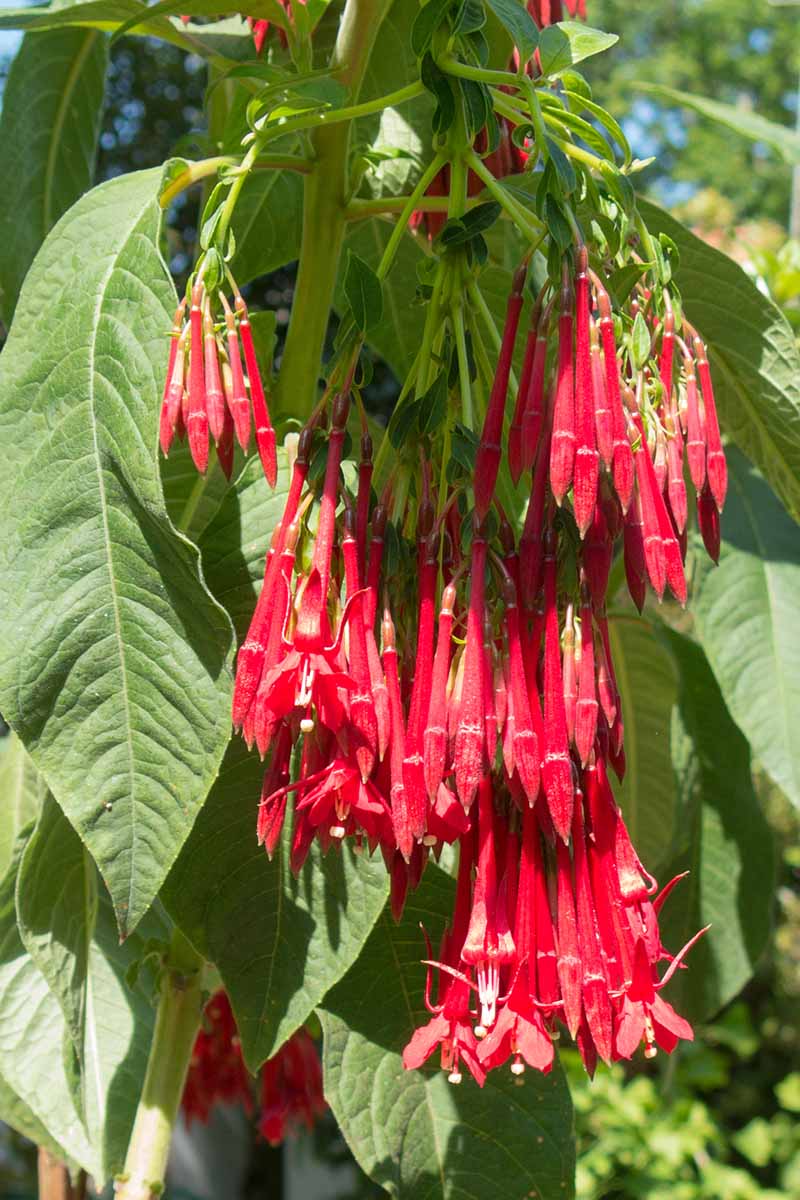
Some native and naturalized plants are known for their flavorful fruits and flowers. F. boliviana, F. excorticata, F. splendens, F. paniculata, F. corymbiflora, F. procumbens, F. venusta, and their hybrids are all worth checking out.
If you really want a fuchsia berry treat, try growing the New Zealand native F. procumbens. The berries on this plant are extremely sweet and juicy.
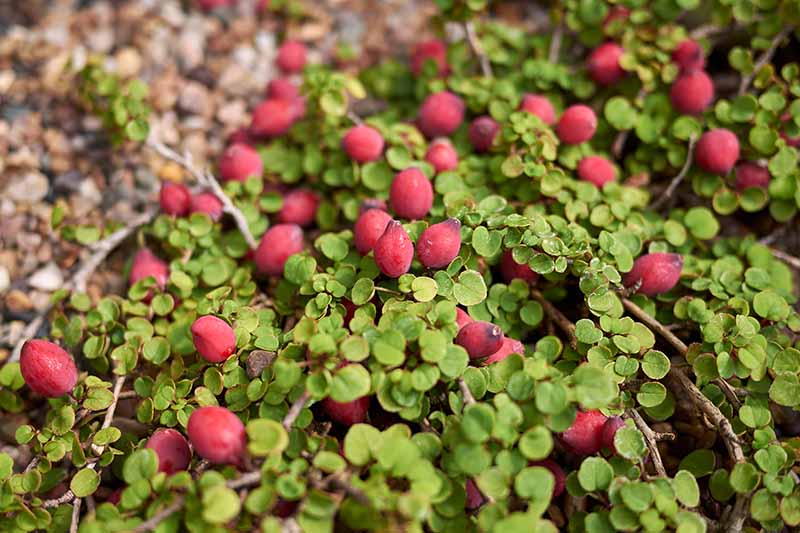
As for the leaves, I haven’t noticed a huge difference from one species to the next, but younger leaves tend to be less bitter than more mature foliage.
When it comes to leaves and flowers, the best way to determine if you like the flavor is to take a nibble and test them out. Not your cup of tea? Move on to the next! There is a seemingly endless variety out there.
Use and Preserving
The berries don’t keep long at all once you pluck them. Use them right away or freeze them. You can also let the berries dry in a cool spot with good air circulation and eat them like raisins.

The berries freeze well and can be stored in the freezer for up to a year. Wash them and allow them to dry. Place the berries in a sealed container or bag and press out any excess air before putting them in the freezer.
When it comes to the blossoms, they are best when enjoyed fresh. If you need to store them, wrap them in paper towels and put them in a resealable plastic bag. Be sure to gently force the air out of the bag, and refrigerate for up to a few days.
The inner petals are the sweetest, but you can eat the entire flower. You might want to remove the sepals, tube, and ovary. These are usually bitter, though bitterness can make a nice addition to food – think of a flavor like that of endive and radicchio.

I also remove the little dangly bits from the flowers (which include the style, stigma, anther, and filament).
While they taste fine, these thin threads tend to add a strange texture to salads and sandwiches that isn’t all that pleasant.
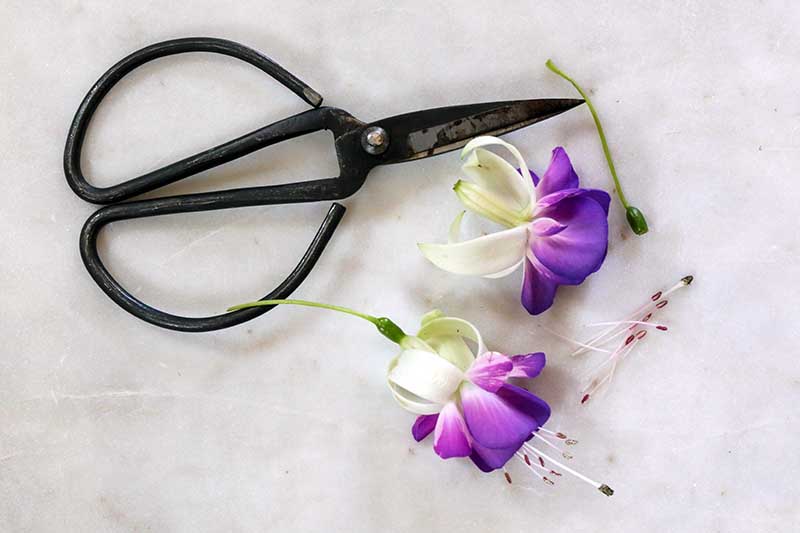
I have used the threads as a garnish on fish and desserts, however.
You can also eat the leaves as you would lettuce in salads or sandwiches, or as a fresh garnish for soup, though I recommend that you test them before you start tossing piles of them into your food.
Some are quite bitter, while others have a more mild, pleasant flavor, depending on the size, age, and species.
The berries make delicious jams and jellies, but I also love to add them to yogurt, cookies, cakes, and scones.
I’ve also read old cookbooks that recommend crystallizing or candying the petals and leaves as garnishes for desserts, though I’ve never tried it myself. You can find instructions for doing this on our sister site, Foodal.
The fruits don’t just make a tasty addition to sweet dishes, though. They can also provide an interesting contrast to meats like pork and fish, whether cooked with the protein or added after cooking.
Last year, I made grilled lobster topped with a mash of fuchsia berries mixed with a bit of lemon and it was a big hit.
A Word of Caution:
The juice from the berries can stain your skin and clothing, so be prepared. Wear gloves or an apron while prepping the fruits.
Make sure you’re only harvesting and eating from plants that haven’t been sprayed with chemicals. You should also avoid eating plants growing near roadsides or those harvested from unfamiliar areas.
If you purchase your fuchsias from a nursery or home store, assume that they have been sprayed. Wait at least a few weeks to harvest, and rinse the plant parts thoroughly before eating.
Grow Fuchsia for Food and Flowers
Fuchsias are pretty fabulous, right? I mean, they’re incredibly beautiful, but there’s so much more to them than just a pretty face.
If you’ve never popped one of the fruits into your mouth or nibbled on a petal, get on it! At worst, you might be unimpressed with a less-than-stellar hybrid, but you might be pleasantly surprised.

Once you have some taste testing under your belt, I’d love it if you came back here and shared some of your favorite species or hybrids that you’ve discovered in the comments below.
We fuchsia tasters need to share our info on the best fuchsias to munch on, since there isn’t much available out there!
And for more information on growing fuchsias, have a look at these guides next:
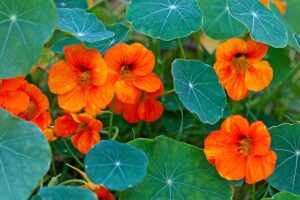

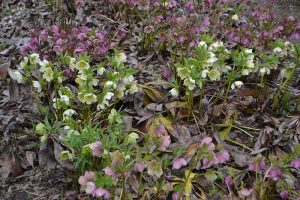
Amazing article thank you. Will look to start growing even more of these wonderful flowers now 🙂
Hello Kristine,
I am in Australia but my sister-in-law and her husband live in McMinnville. I know Portland and Oregon pretty well after spending 7 months in the USA in 2017. Love this area…
My grandmother loved Fuchsias and had hundreds of them, all types. When I was a kid I wish I knew you could eat them!
We have some in pots, the dark maroon variety. I just ate some berries and the flowers but was a bit underwhelmed. Not much flavour… which type is the most sweet?
Kindest regards,
Daryl Mills
Melbourne, Australia
McMinnville is such a pretty area, and the PNW is perfect for fuchsia growing. I’ve found that a lot of big, showy, double flower types don’t taste as nice as some of the smaller, single flower cultivars and hybrids. I’ve also found that hardy types tend to be sweeter than tender types. Fuchsia boliviana has a wide reputation as the tastiest species, but you rarely see that for sale in nurseries. When it comes to the more common Fuchsia magellanica, look for single bloom cultivars like ‘Hawkshead’ and ‘Checkerboard.’ I grew ‘Mrs. Popple’ for the first time this year and… Read more »
Wow what an article i made a fruit salad and topped it with fuchsias and my guests loved it!! I was wondering if the new zealand specie has edible flowers too or just the berries?
Sounds fantastic! Yep, Fuchsia excorticata has edible flowers and berries.
I live in Berkeley and have a beautiful fuschia – never realized I could eat the berries. They are quite mild but interesting and fun to have people try. Thanks!
Awesome, glad you tried them. Some species/cultivars are much tastier than others, so experiment with different ones if you have the chance.
I have no idea what variety of fuchsia I have but it’s at least 30 years old and the size of a small tree. I just tasted its berries for the first time! It was kind of like a bland grape/fig!
Hi Alice, thanks for sharing! Doesn’t sound like one of the tastiest cultivars out there, but certainly not bad!